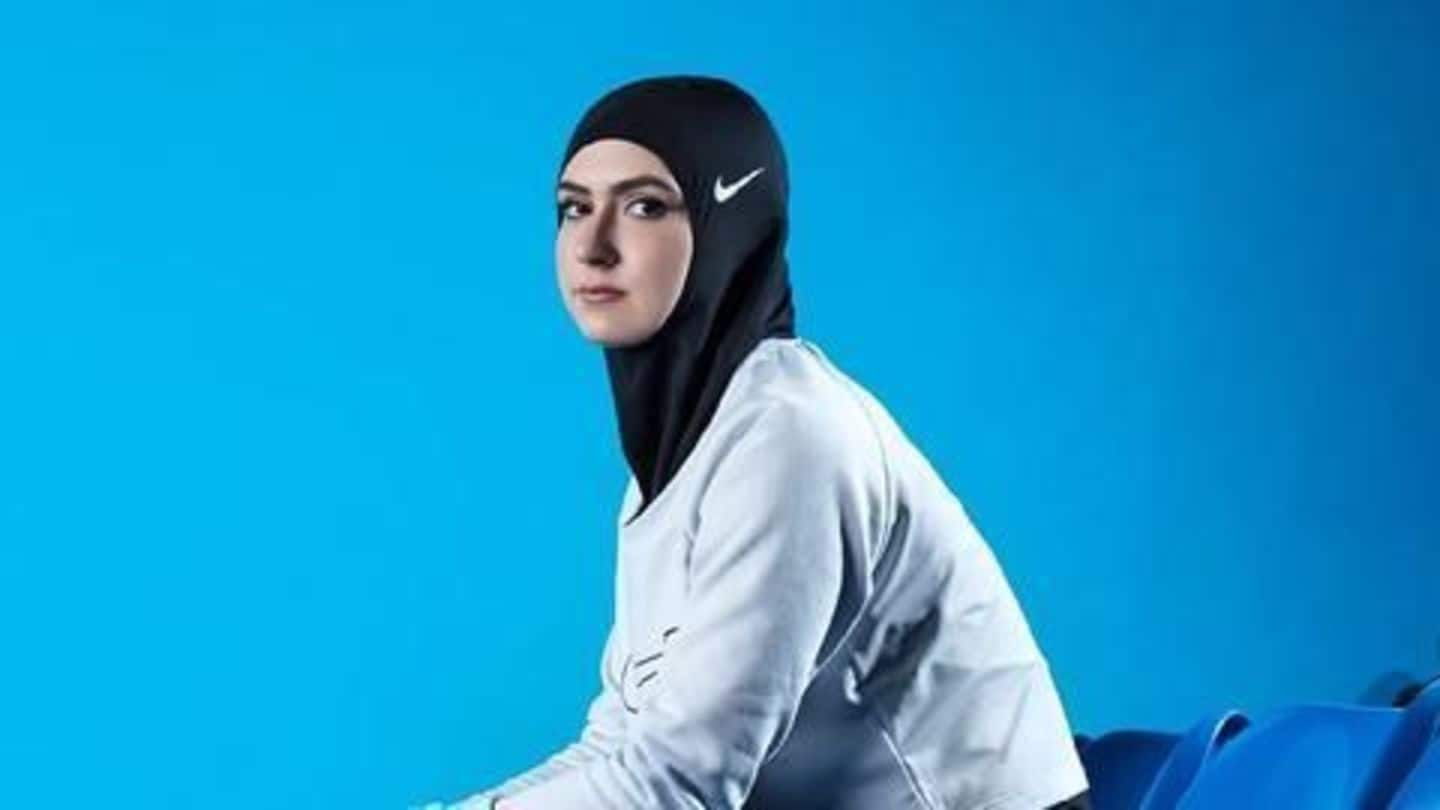
Nike's latest offering: 'Pro Hijab' for Muslim athletes
What's the story
Nike has announced a special-hijab for female Muslim athletes, made of lightweight, breathable fabric. It will be released in 2018. This is a welcome development for many women, who had to play in cotton hijabs that retain water and get damp with sweat. The move gives a push to Nike's inclusive ideals. In this timeline, we explore the diminishing lines between fashion and religion.
Religious clothing
Why they wear what they wear
The robes of Buddhist monks date back to Buddha's time, when such clothing reflected the simple life they were supposed to live. Jewish women generally wear long skirts and cover their heads, signifying modesty. Men wear long black outfits, which "help keep priorities straight". Sikh clothing includes the five articles of faith (kachhera, kanga, kara, kes, kirpan), enforcing a sense of unity.
Iconography
Religious iconography in fashion
In D&G's 2013 fall collection, heavily inspired by Venetian mosaics and the Cathedral of Monreale, the effect of religious iconography could be seen in even the shoes and bags. KTZ and Thomas Browne followed in 2014; while KTZ went subtle, the latter's show was like being in a church. Religious influences have even trickled down to street style, in clothing, accessories and even tattoos.
Information
Loki and Thor discuss fashion in Myntra ad
In April'15, when Avengers 2 released, Myntra tweeted a screenshot of a conversation between Loki, Thor and the brand, where a jealous Loki demanded to know what Thor would be wearing to the Red Carpet. "Gods would like to be stylish too," said the caption.
Hinduism
The stylish Hindu gods with their fashionable weapons
Apart from being fashionably dressed, Shiva carried a trident, said to carry the power of the Holy Trinity, and is a necessary part of Hindu iconography. The image of a graceful Vishnu, with his fast-spinning Chakra, is found in almost all homes. Crores are annually spent on dressing Durga in fine silk and shining gold, while she carries a dangerous-looking trishul and kills Mahishasura.
Hijab
The hijab and the Muslim fashion industry
For the first time, all models for designer Anniesa Hasibuan's show at the 2016 NY Fashion Week walked the ramp in hijabs, a historic moment in the global debate on Muslim women's clothing. Brands like H&M, Tommy Hilfiger and D&G cashed in on the "modesty movement" with special collections, targeted ads and partnerships. The Islamic fashion market is expected to be worth £226bn by 2020.
Androgyny
On the other end of religion in fashion: gender-neutral clothing
One of the many facets of breaking away from traditional and religious guidelines is the emergence of gender-neutral fashion. Apart from Rick Owens, Rad Hourani and other iconoclastic labels, major players including Gucci and Prada have now forayed into the zone with androgynous collections. Besides the ramp, the trend has also reached the famous Selfridges in London and the online store thecorner.com.
The limits
Balancing the religious leanings of fashion
Not all merging of religion and fashion has been peaceful. The emergence of the upside-down cross on clothes, widely regarded as the symbol of Satan as well as of St. Peter's Cross, was a controversial development. Considering the varying connotations of almost any given symbol, a person should be able to explain what they are wearing to the multi-cultural and multi-religious world.